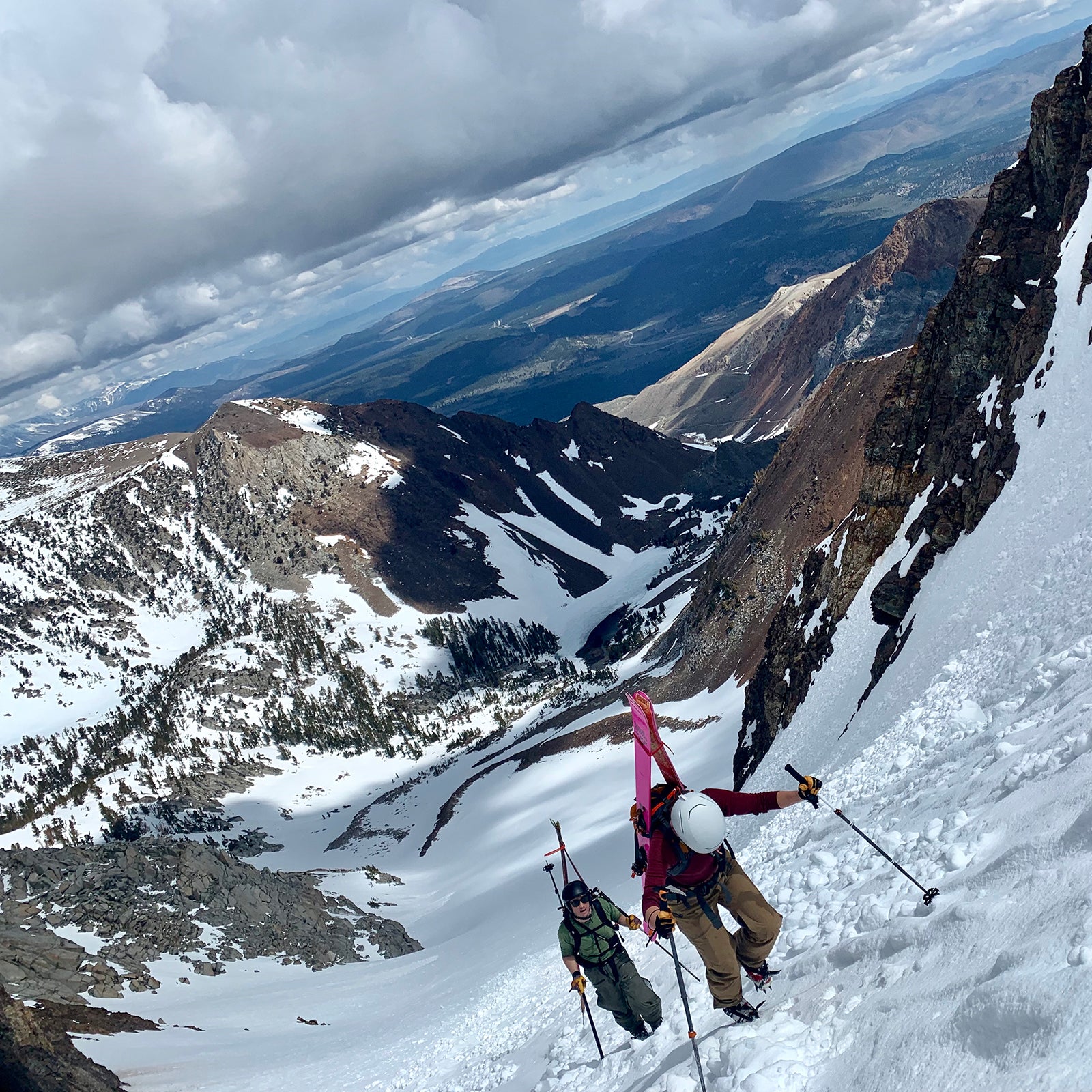Pro skier Cody Townsend is on a╠řmission right now to ski all 50 lines in the 2010 book╠ř. HeÔÇÖs one year and 20 lines into what he hopes is a three-year project, and heÔÇÖs╠řlearned a ton so far. Townsend isnÔÇÖt the only skier attempting all 50. Utah ski mountaineer╠ř has been at it for decades and has currently done 30 of the descents. Some of the lines in the book feel practically impossible╠řdue to their remote and challenging terrain, while╠řothers are╠řliterally disappearing due to climate change and rockfall. But a few are pretty attainable for the rest of usÔÇöalbeit if you have proper backcountry-skiing experience and avalanche training. We asked Townsend and Howell for their input on the most doable lines in the book. HereÔÇÖs what they recommended.
Mount Shasta, California
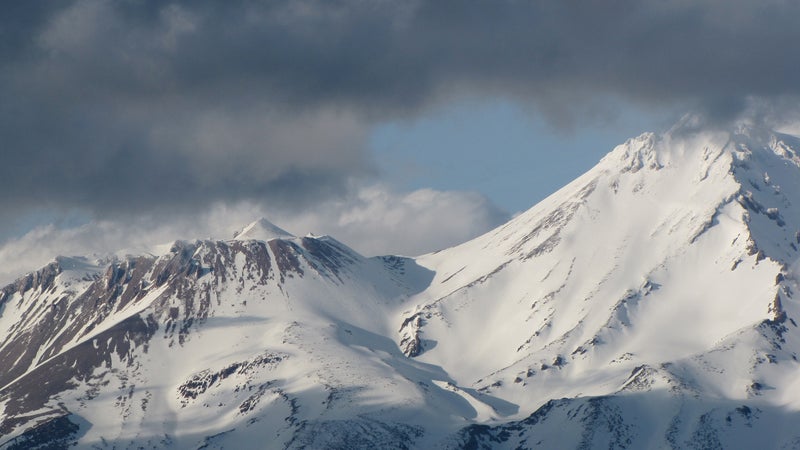
A good entry-level ski-mountaineering objective, 14,162-foot Mount Shasta is a volcanic peak at the southern end of CaliforniaÔÇÖs Cascade Range. YouÔÇÖll spend many hours slogging up 7,200 vertical feet, and youÔÇÖll need an ice ax╠řand crampons to ascend the peakÔÇÖs steepest sections. The book cites the Avalanche Gulch route up Shasta, the most popular and straightforward thoroughfare for climbers and skiers come springtime.╠ř leads trips in April and May (from $145). Sleep in your car at the trailhead or post up at╠ř, a hotel and hostel with on-site camping that opened last╠řspring (camping from $40; bunks from $50; rooms from $110).
Tuckerman Ravine, New Hampshire
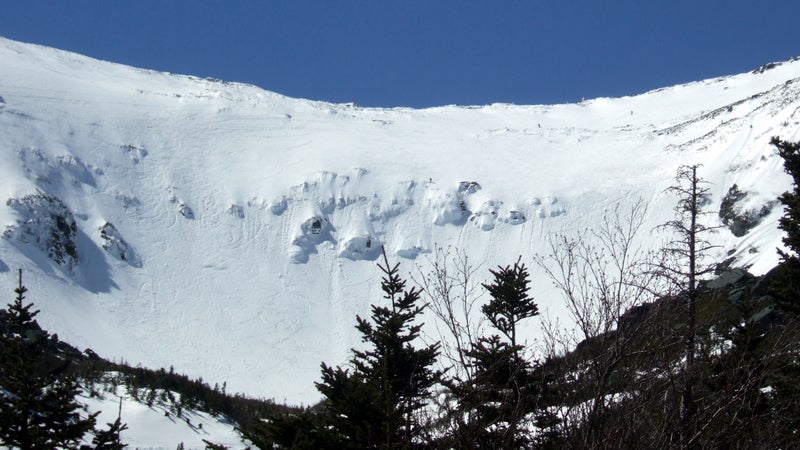
On the southeast flank of 6,288-foot Mount Washington, youÔÇÖll find a glaciated cirque called Tuckerman Ravine, a rite of passage for backcountry skiers in the Northeast. It may be the most popular line in the Fifty Classic Ski Descents╠řbookÔÇöthis place gets packed on spring weekends. Park at the Appalachian Mountain ClubÔÇÖs Pinkham Notch Visitor Center, then strap skis to your backpack to hike the three miles along Tuckerman Ravine Trail to the base of the bowl. From there╠řyouÔÇÖll have your choice of a number of classic lines.╠ř╠ř(from $325) leads backcountry trips and instructional courses all around Mount Washington, including custom trips into TuckÔÇÖs. The╠ř╠ř(from $70) at Pinkham Notch is open year-round and comes with breakfast, dinner, and guidebooks in the library.
Mount Superior, Utah
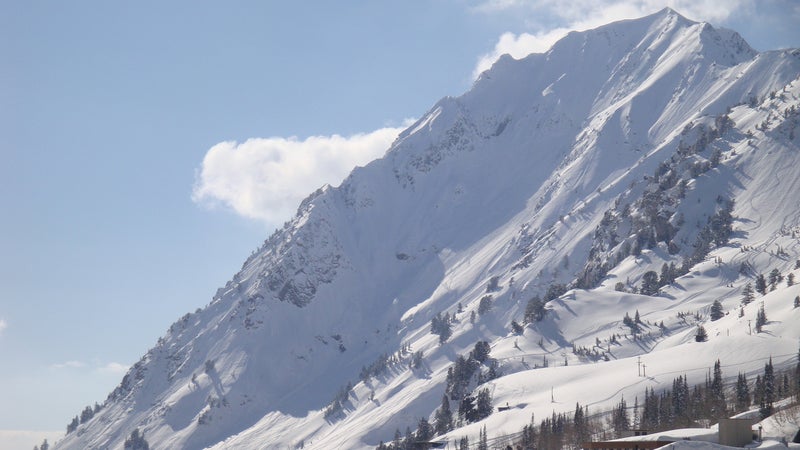
Drive up UtahÔÇÖs Little Cottonwood Canyon on your way to Alta or Snowbird╠řand you canÔÇÖt miss Mount Superior, which towers over the road and beckons backcountry skiers with fresh powder after a storm. This popular Wasatch peak gets trampled with dawn-patrol skiers from Salt Lake City, but you can still find quiet corners and untracked lines in the steep, north-facing╠řCardiac Bowl or on South Face, which has lines like Little Superior, Suicide Chute, and Pinball Alley.╠ř╠ř(day trips from $200) guides skiers down the southeast face of Superior. Stay at Alta╠řat the╠ř (from $329), which is just steps from the trailhead.
Bloody Couloir, California
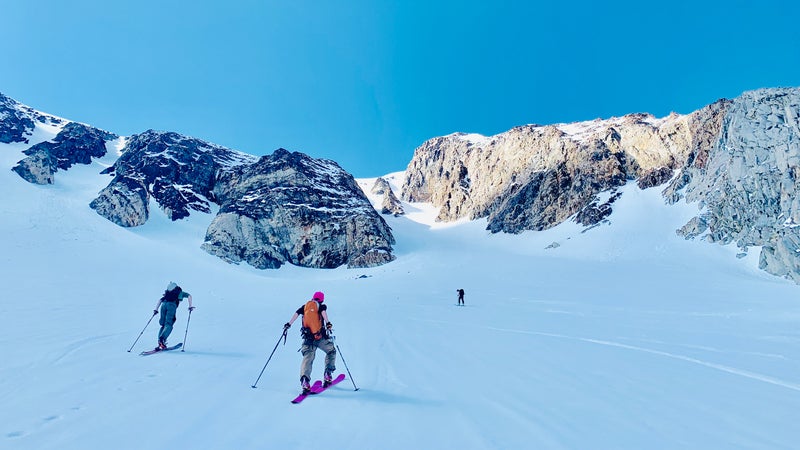
ItÔÇÖs a long approach to the base of 12,552-foot Bloody Mountain, in the eastern Sierra Nevada, before you even begin the haul up the peakÔÇÖs signature north-facing couloir. YouÔÇÖll spot this marquee line from Highway 395 as youÔÇÖre heading south from the town of Mammoth Lakes. To get there, drive up a rough, four-wheel-drive-only roadÔÇöif the snow is low enoughÔÇöor hike or skin an additional five miles and over 2,200 vertical feet to reach the bottom of the 2,500-vertical-foot chute.╠ř will do private, custom day trips here for clients with enough backcountry╠řexperience (from $475).╠ř╠ř(from $119) has 28 cabins and a restaurant just a few miles from the start of the route.
Seven Steps of Paradise, British Columbia
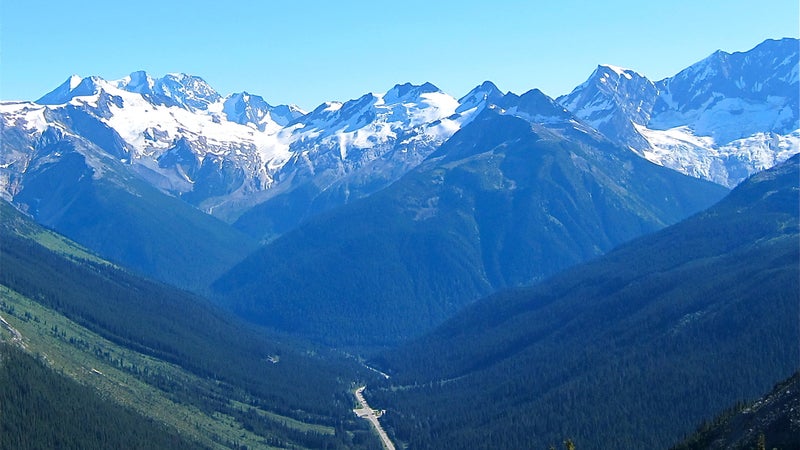
Rogers Pass is full of excellent ski-touring options. But Seven Steps of Paradise might just be the most classic and doable. You can see the line from the Trans-Canada Highway, making it a popular roadside tour. YouÔÇÖll start at╠řHighway 1 at Rogers Pass, hike╠řto the Asulkan Hut, and then top out on the headwall of 9,245-foot YoungÔÇÖs Peak, gaining over 5,000 feet in elevation along the way. Stay overnight at the Alpine Club of CanadaÔÇÖs backcountry╠ř╠ř(from $35), which will take you a few hours on skis to reach. Seven Steps of Paradise is easily accessed from the hut.╠ř leads group day trips all over Rogers Pass (from $299).
Silver Couloir, Colorado
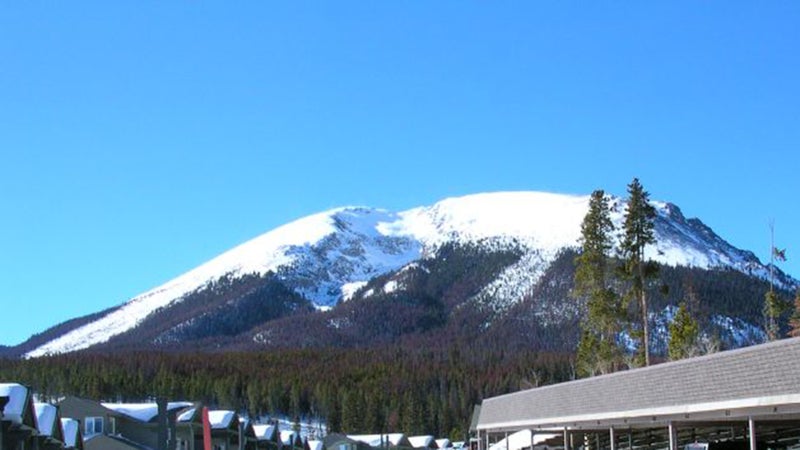
Like many of the lines in the book, this one is hardly a well-kept secret. Despite the potential crowds youÔÇÖll find here, itÔÇÖs still as aesthetic as a couloir gets. You can see the Y-shaped Silver Couloir on the northeast side of 12,777-foot Buffalo Mountain as you drive west through the Eisenhower Tunnel on Interstate 70 in ColoradoÔÇÖs Summit County. The 3,000-foot-long, relatively wide line reaches about 45 degrees in steepness.╠ř╠ř(half-day trips from $220) will escort you there. Stay in the town of Silverthorne at the╠ř╠ř(from $70), a five-room lodge run by a backcountry skier.


